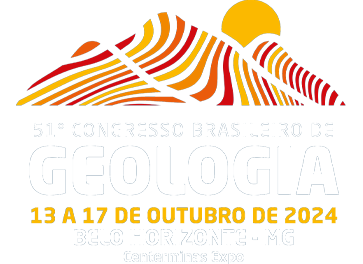Dados da Submissão
Título
A REVIEW OF THE RESEARCH ON THE POTENTIAL OF ACID TO INTERMEDIATE VOLCANIC ROCKS FOR CO2 MINERALIZATION AND GEOLOGICAL STORAGE
Texto do resumo
The increase in atmospheric CO2 concentrations is directly related to the consumption of fossil fuels, and it has caused global climatic, social, and ecological changes. Whether civilization fails to reduce anthropogenic emissions, atmospheric CO2 concentrations will double during the second half of the 21st century, with consequent catastrophic impacts. Geological Carbon Storage (GCS) represents a fundamental alternative to reducing emissions, and it is based on the injection of concentrated CO2 in geological formations. In the last decade, a series of experiments and pilot projects have demonstrated that the injection of CO2 into mafic and ultramafic volcanic rocks can result in the fast mineralization of carbon into carbonate minerals, which implies economic and safety gains. The reactions involve the Fe- Mg-rich minerals in the mafic rocks thus, mainly mafic volcanic rocks have been considered for GCS projects. However, due to the expressive volumes of acidic to intermediate volcanic rocks in many regions of the world, studies on the CO2 mineralization potential of these rocks have also been conducted. We present a review of the recent achievements on this theme, which focus on rhyolitic and andesitic rocks. Reaction experiments executed with these lithotypes range from 160-250 °C, and pressure from 30-60 bar, and duration from 30 to 60 days. To date, the experiments compared the CO2 reaction potential of these rocks to the results obtained for basaltic rocks. The abundance of minerals containing Ca, Mg, and Fe is directly linked to the reactivity potential, thus, mafic and ultramafic rocks have greater carbonation potential than intermediate to acidic rocks, due to their high content of olivine, pyroxene, and plagioclase minerals. Despite this difference in mineral composition among these classes of volcanic rocks, the experiments have demonstrated that mineralization can also occurs in a substantial volume and within a relatively short time frame in acidic to intermediate volcanic lithotypes. In some studies, for example, the dissolution rate of andesite compared to basalt is approximately one to two orders of magnitude lower. The fewer experiments published demonstrated that, although acidic to intermediate lithotypes may correspond to slightly slower capture rates compared to mafic and ultramafic volcanic reservoirs, they still can be used for permanent CO2 storage at a significantly faster rate than sedimentary clastic reservoirs (sandstones). Therefore, the investigation of acid and intermediate volcanic rocks, which can also occur related to mafic and ultramafic units, should be considered because it will increase the available volume of reservoirs for GCS operations. In Brazil, studies on the potential of mafic and ultramafic rocks are in a promising stage, as the oil and gas sector increasingly invest in decarbonization sources. Initial studies are being conducted on the Ipojuca Magmatic Suite (IMS), located in the Pernambuco Basin. The region has a location that arouses interest due to its favorable geographic location, near CO2 emission sources such as the SUAPE industrial complex. Future research evaluating the potential of acidic to intermediate lithologies could further increase the economic viability of a pilot project in the region.
Palavras Chave
Carbon Capture Storage; Mineral trapping; Andesite; Rhyolite; Pernambuco Basin
Área
TEMA 13 - Transição de matriz energética e energia renovável
Autores/Proponentes
Aline Macrina Silva, Carla Joana Santos Barreto, José Antonio Barbosa, Tallys Celso Mineiro, Sara Gomes Costa, Felipe Mature Ribeiro Silva, Germano Mário Silva Ramos, Bruno Felipe Carvalho, Gabriel Medeiros Marins
